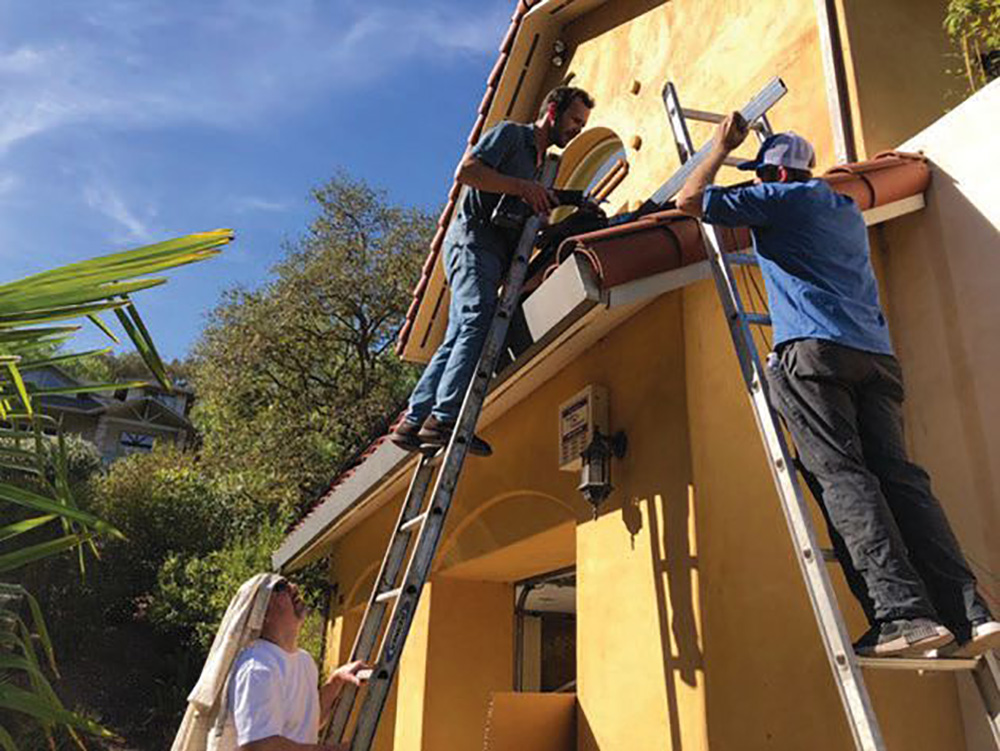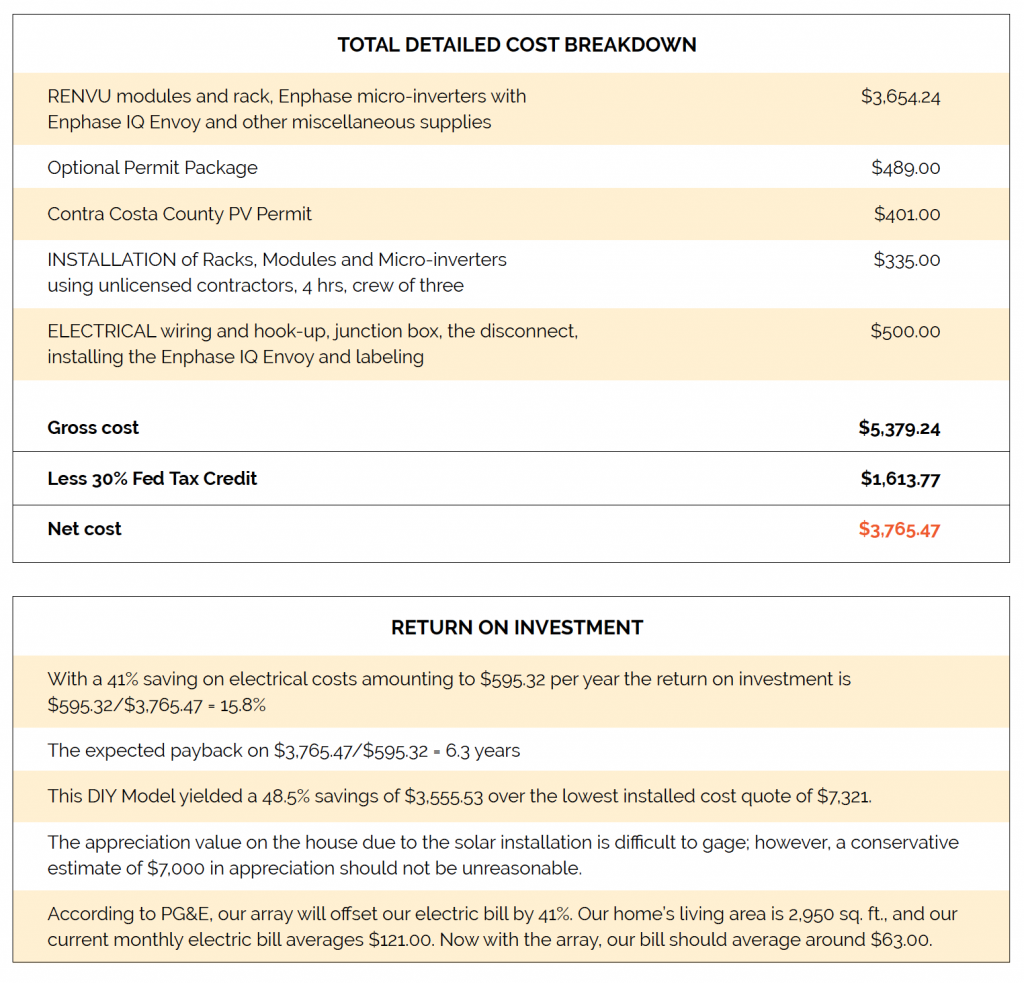Robert Joe, Edited by Elaine Hebert March 2, 2019

Gregory Chech, Javier Bernard and Nick Balamonte working on garage overhang.
We call our house “Ecohouse Walnut Creek.” When designing it about 20 years ago, we carefully reviewed options for what construction materials would be most eco-friendly and appropriate for our climate (inland in the San Francisco Bay Area). We chose to build our house out of rice straw bales, which were available locally. The exterior walls are insulated with two-foot-wide straw bales and have an R-value around R-50.
We chose structural, light-gage steel for the framing material instead of wood due to the over-weighing consideration that we wanted to use structural materials that would last far longer than wood. The first overarching principle of green building as presented in the green building guidelines by the Alameda County Waste Management Authority is ‘build for the long-term,’ build a home to last at least 50 years. With proper maintenance we feel Ecohouse Walnut Creek should last 75 years or more. Steel not only solves the long-term question but is far less prone to infestation of termites, dry rot, fungus and mold.

My wife Lily and I knew we wanted solar PV, but due to budget constraints all we could do at the time was install the rack footings on and electrical conduits to the south-facing garage overhang, which was roofed with recycled clay roofing tiles salvaged from a local office building damaged in a fire. We knew we would install PV one day.
We had a strong interest in learning about sustainable construction practices and in sharing the knowledge, so we organized three workshops at our home. The first was “Building Walls with Straw Bales,” and the second was “Radiant Floor Heating.” The third and final was a do-it-yourself (DIY) Solar PV Workshop. The workshop goals were to educate, train, promote community, provide inspiration and have fun.
The DIY Solar Workshop took place on October 27, 2018. It was sponsored by RENVU Solar Distributors (renvu.com) and Sustainable Walnut Creek (www.sustainablewalnutcreek.org) to promote DIY PV. I’ve observed a lot of advertising by solar companies, but there just isn’t a lot of information on obtaining PV using a DIY or hybrid DIY/contractor method.
We solicited and received various quotes for installing PV from solar companies ranging from $7,321 to $14,605. After getting these quotes, I began calling solar distributors – companies that sell wholesale to the solar companies that then resell to the homeowners at a markup. This was relatively easy. Three bids came in at $4,805, $5,326 and $6,276. I went with RENVU at $4,805. We chose RENVU not only because of price, but also their proximity for pickup, Permit Package Option, Free Solar Kit Guide (www.renvu.com/Solar-Kit-Guide), and their willingness to help sponsor the DIY Solar Workshop.
The most difficult part of the Hybrid DIY Method was finding an electrician that would do the wiring and hook-up.
Since I did not have the electrical expertise for the wiring and hook-up, I used a hybrid model of purchasing the PV modules, racks, micro-inverters and other supplies and having the array and electrical hook-up installed by contractors.
I submitted the permit application using RENVU’s optional Permitting Package ($489) to Contra Costa County on October 4. The county permit fee was $401. I received the permit within one week after submitting the necessary structural engineering calculations.
The most difficult part of the Hybrid DIY Method was finding an electrician that would do the wiring and hook-up. I learned that most electricians do not do wiring for PV systems, but I lucked out when one electrician responded via Heatspring.com: Dr. Sean White, a NABCEP-certified PV installer, solar energy professor, consultant, author, board member of Northern California Solar Energy Association (an ASES chapter), and 2014 Trainer of The Year at the Interstate Renewable Energy Council (IREC).

I found out that a worker I had hired for various handyman jobs also had experience in installing PV, which he had done for several solar companies in the past. Although Marcus Yanez was not licensed, he had proven himself to be honest and reliable, and with help from two other workers, installed the entire array, the mounting racks, the PV modules, and the micro-inverters, all in four hours.
Although it’s a small [2.24 kilowatt (kW)] array of seven Solaria 320-watt modules, I’m proud to say, “Small can be beautiful. It’s the final architectural embellishment that we’ve long awaited for, it stands out and makes a statement on what we’re doing in our
fight against climate change.”
Ecohouse Walnut Creek Cost

DIY Solar Workshop Credits
With Heartfelt Gratitude to the Ecohouse Walnut Creek DIY Solar Workshop Team: Dr. Sean White, Marsha Cheung Golangco, Ulrich “Uli” Wolf, Chad Buccine, Nick Balamonte, Amoggh Rao, Michael Pollock, Julie “JuJu” Bisch-Pollock, Marcus Yanez, and Gregory Check.
Sponsored by RENVU Solar and Sustainable Walnut Creek.




